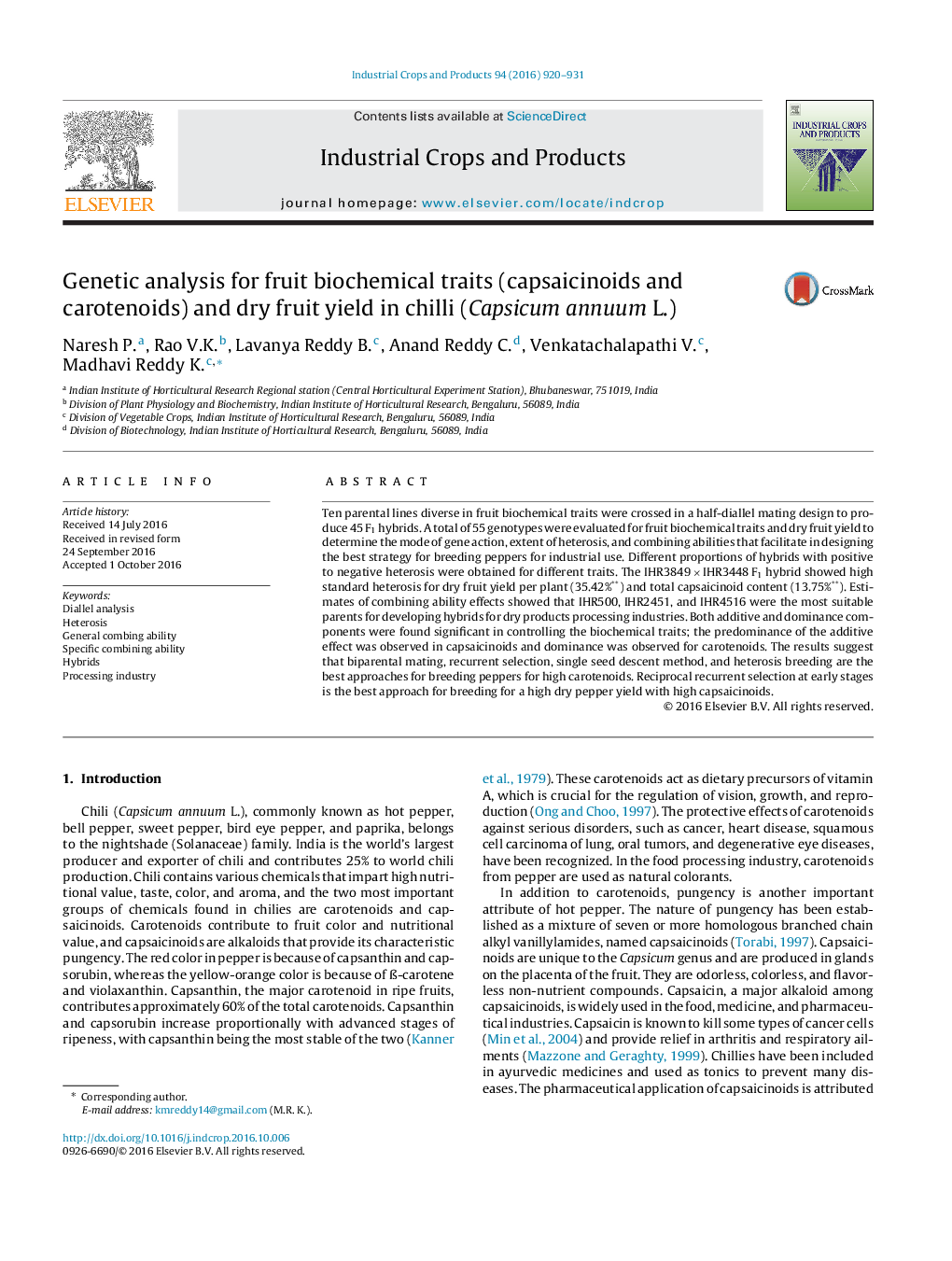| Article ID | Journal | Published Year | Pages | File Type |
|---|---|---|---|---|
| 6375360 | Industrial Crops and Products | 2016 | 12 Pages |
Abstract
Ten parental lines diverse in fruit biochemical traits were crossed in a half-diallel mating design to produce 45Â F1 hybrids. A total of 55 genotypes were evaluated for fruit biochemical traits and dry fruit yield to determine the mode of gene action, extent of heterosis, and combining abilities that facilitate in designing the best strategy for breeding peppers for industrial use. Different proportions of hybrids with positive to negative heterosis were obtained for different traits. The IHR3849Â ÃÂ IHR3448Â F1 hybrid showed high standard heterosis for dry fruit yield per plant (35.42%**) and total capsaicinoid content (13.75%**). Estimates of combining ability effects showed that IHR500, IHR2451, and IHR4516 were the most suitable parents for developing hybrids for dry products processing industries. Both additive and dominance components were found significant in controlling the biochemical traits; the predominance of the additive effect was observed in capsaicinoids and dominance was observed for carotenoids. The results suggest that biparental mating, recurrent selection, single seed descent method, and heterosis breeding are the best approaches for breeding peppers for high carotenoids. Reciprocal recurrent selection at early stages is the best approach for breeding for a high dry pepper yield with high capsaicinoids.
Related Topics
Life Sciences
Agricultural and Biological Sciences
Agronomy and Crop Science
Authors
Naresh P., Rao V.K., Lavanya Reddy B., Anand Reddy C., Venkatachalapathi V., Madhavi Reddy K.,
